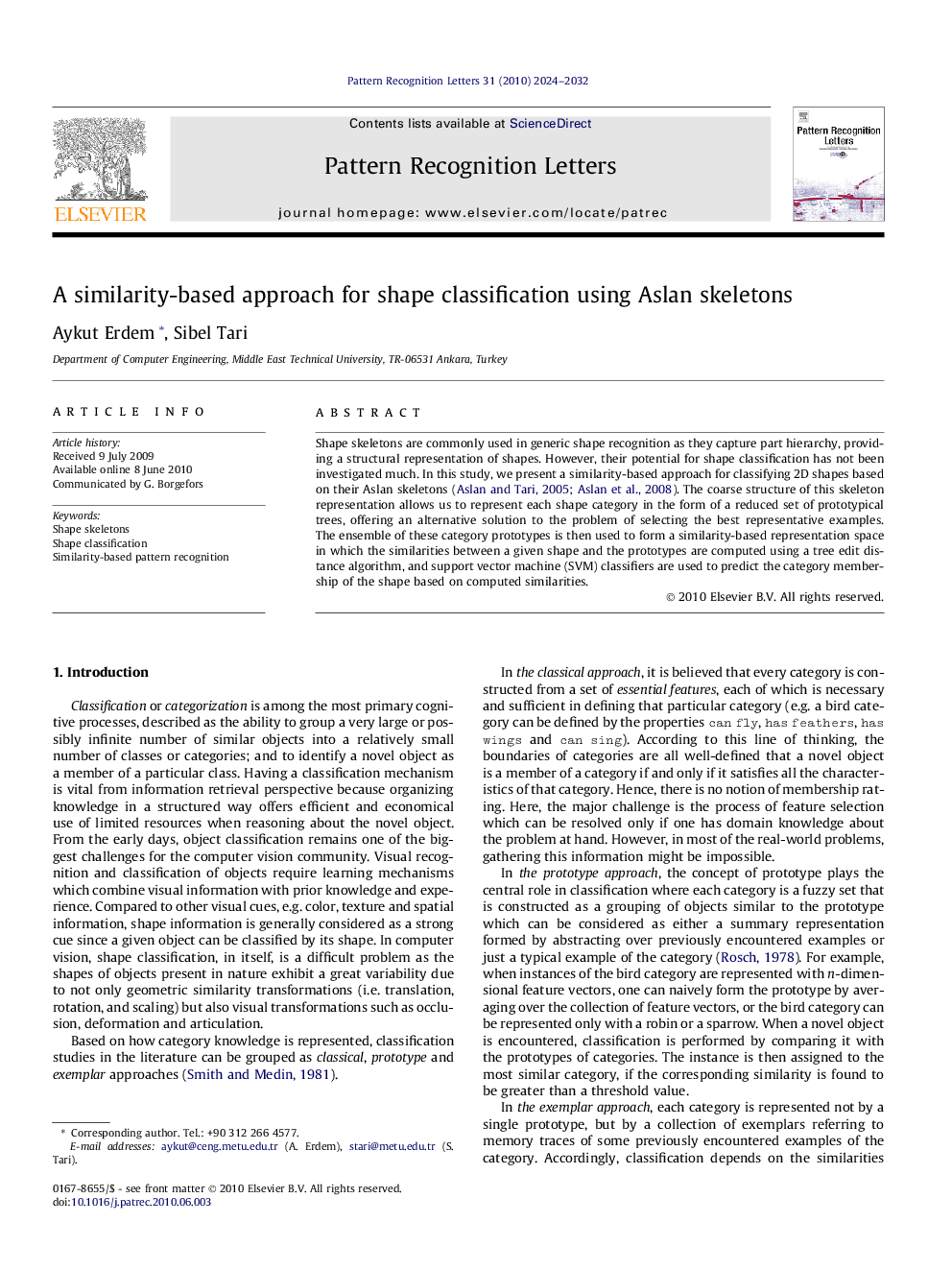| Article ID | Journal | Published Year | Pages | File Type |
|---|---|---|---|---|
| 534406 | Pattern Recognition Letters | 2010 | 9 Pages |
Shape skeletons are commonly used in generic shape recognition as they capture part hierarchy, providing a structural representation of shapes. However, their potential for shape classification has not been investigated much. In this study, we present a similarity-based approach for classifying 2D shapes based on their Aslan skeletons ([Aslan and Tari, 2005] and [Aslan et al., 2008]). The coarse structure of this skeleton representation allows us to represent each shape category in the form of a reduced set of prototypical trees, offering an alternative solution to the problem of selecting the best representative examples. The ensemble of these category prototypes is then used to form a similarity-based representation space in which the similarities between a given shape and the prototypes are computed using a tree edit distance algorithm, and support vector machine (SVM) classifiers are used to predict the category membership of the shape based on computed similarities.
